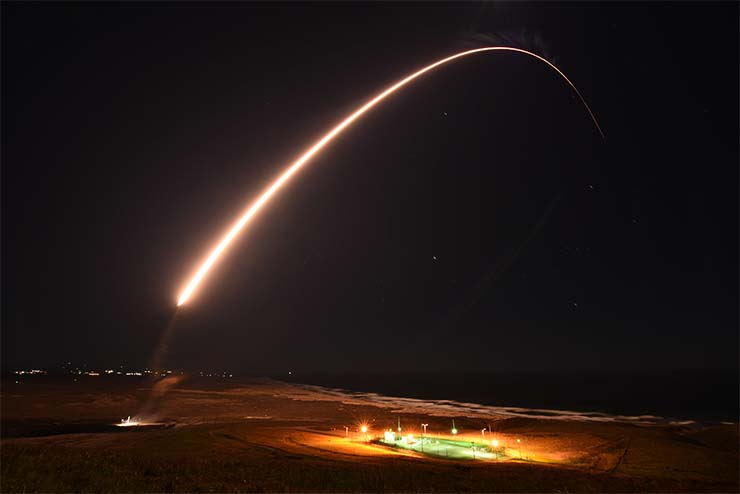
Vandenberg Space Force Base (California): The US Air Force launched an unarmed Minuteman III intercontinental ballistic missile over the Pacific Ocean in a routine test, a service release said.
The missile was fired from here around 1:30 am local time, and travelled about 4,200 miles to the Marshall Islands, where the US has conducted nuclear weapons tests for decades. Test launches ensure America’s land-based nuclear missiles are still viable after more than 50 years, and are a chance to vet upgrades or different methods of controlling the weapons. They also serve as a warning shot to deter aggression against the United States.
“These test launches verify the accuracy and reliability of the ICBM weapon system, providing valuable data to ensure a continued safe, secure and effective nuclear deterrent,” the Air Force said in the release.
This week’s Minuteman III was capable of carrying three nuclear warheads — a design that would allow a single ICBM to hit three separate targets with one launch. The Air Force occasionally tests that configuration but does not use it on its active arsenal of missiles, which each carry one warhead.
The Air Force cautioned that the event was not held in reaction to current world events. It has test-launched two other ICBMs so far this year. Still, the trial run came shortly after the head of Russia’s Roscosmos space agency announced September 1 that the country had deployed a new “Sarmat” long-range ICBM that is capable of carrying multiple warheads and can evade surveillance. North Korea has test-launched more than 100 ballistic and cruise missiles since the beginning of 2022 to protest America’s military ties with neighbouring South Korea and Japan.
Four hundred nuclear-tipped ICBMs are currently in service in underground silos across the continental US, where airmen sit in bunkers around the clock in case the president issues launch orders.
The Air Force plans to replace the Minuteman III fleet with the LGM-35A Sentinel, a modern missile that the Pentagon has estimated may cost around $264 billion over the course of 50 years. The weapons are slated to enter service starting in 2028.















